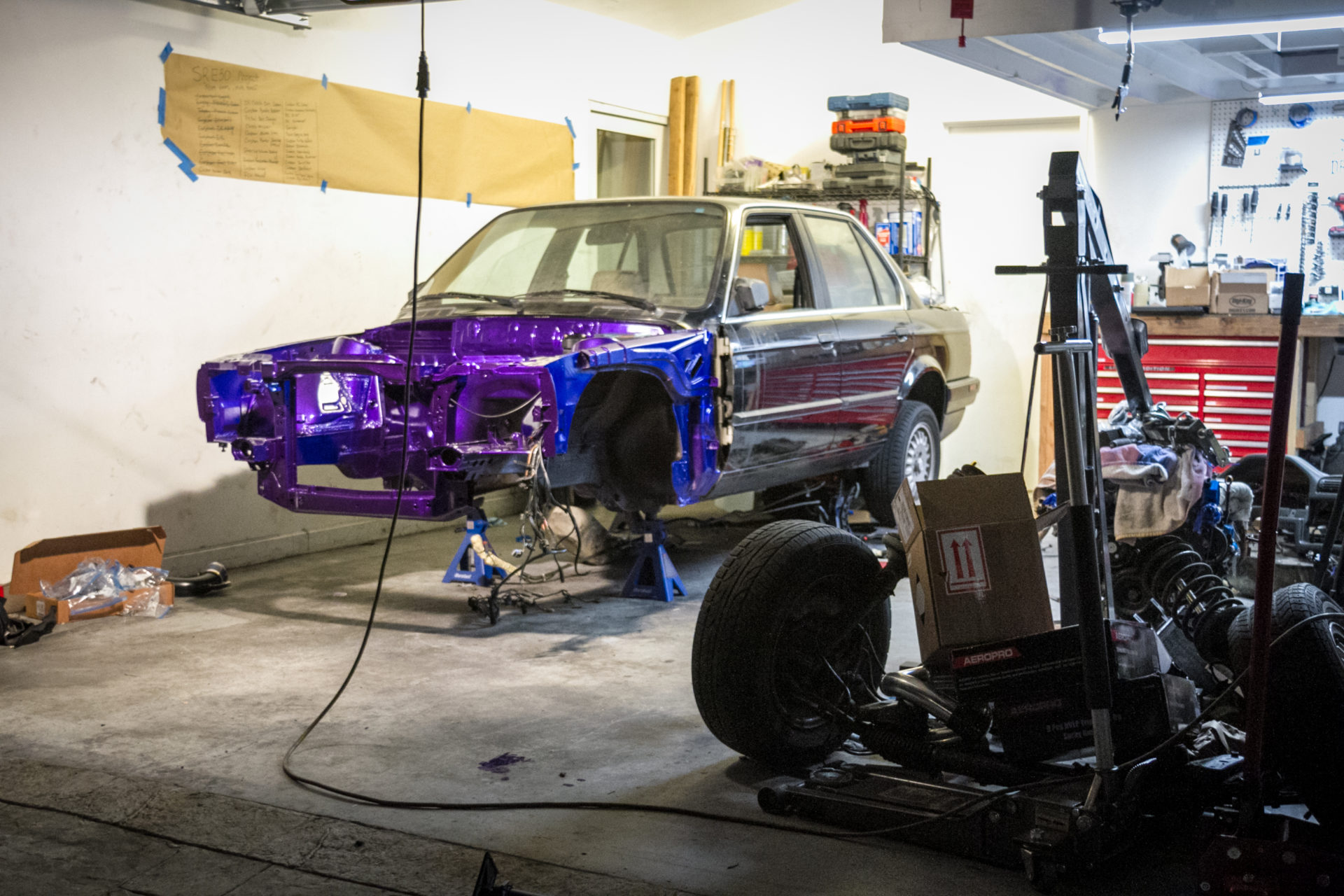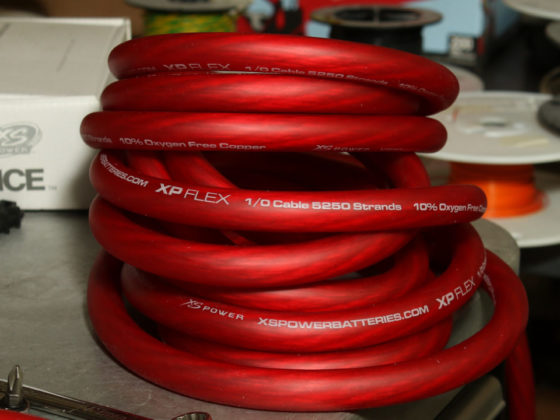In the last installment of the E30 chronicles, we finished up the intercooler system. In this chapter, we will be addressing the driveshaft and the fuel system. By the end of the chapter, the engine bay will finally go from black to dank.
The root of our problem with this swap is that everything on this car is designed in a polar opposite manner to an S-chassis. The fuel system is on the wrong side of the car and has to be routed across, the exhaust is on the opposite side and is going to need extensive heat shielding, the AC compressor is on the wrong side, the driveshaft yoke is in the wrong place, the heater core is on the opposite side, heck, even the hood opens the wrong way! If we didn’t have to solve all of these complicated problems, this car would have been done long ago. Nonetheless, we persevere.


When the E30 was designed, the engineers expected people to simply unbolt the driveshaft flange from the transmission, since the car originally did not have a slip yoke inside the transmission, but rather on the carrier bearing. S-chassis on the other hand, have a slip yoke that goes inside the transmission. Because of this, installing a 1 piece driveshaft on this car is quite difficult. It is not possible to first slide the slip yoke into the transmission, and then bolt the driveshaft to the differential, because the rear subframe goes directly underneath the differential pinion flange. Instead, we have to drop the transmission and move the engine forward, attach the driveshaft to the differential, then move the engine back slowly while aligning the slip yoke with the transmission.






9 comments
Is there a reason people avoid the AN lines with nylon/fabric braid on the outside?
Why risk the damage caused by the steel braid rubbing on damaging things?
I know I don’t!
I built the 2nd e30 SR20 in North America about 10 years ago, I even still have the wiring harness I made. I also used a Laminova Liquid to air intake manifold, negating the need for an intercooler in the front.
I still have the manifold too lol. I used a radiator from a Volvo 240. The heat exchanger for the intercooler was a transmission cooler from and F550 tow truck. It all fit very neatly under the hood.
Have fun with brake booster set up, probably the suckiest part of the swap.
Amazing, I have learned lot of things from your website about every thing about cars and how to repair them, I also work at a company in Dubai and learning from your website.
How much clearence did you have between the tailshaft and the tank? as i have the same setup and im curious.
Not enough. It eventually made contact during an aggressive shift (probably flexed the subframe bushings) and snapped the driveshaft.
We are currently looking into shimming the front of the diff down by machining small spacers for the front diff mount and then shimming the trans up to match the pinion angle. Hopefully that will push it a bit further away from the tank (and allow us to run a bigger driveshaft).
what size tailshaft are you aiming for? mine is a 3 inch and it just touches the tank, we have spaced the front diff mounts but we didnt massage the tank so our next step is to massage the tank a little and see how we go.
We fit a 3″. Had to move the front AND the rear of the diff down. The rear helped the most. We used Garagistic offset diff bushings to move the rear.
I know you’re wearing a respirator and gloves, but spraying catalyzed urethane paint is still a potentially hazardous proposition given the isocyanates they contain. All the fun carcinogens (read the MSDS for the paint) you’re atomizing with a spray gun can be absorbed via your skin and eyes, so maybe add a paint suit and DEFINITELY add eye protection next time you do it.
Sorry to be a downer, but it takes pretty minimal overexposure to go from healthy to F’d.